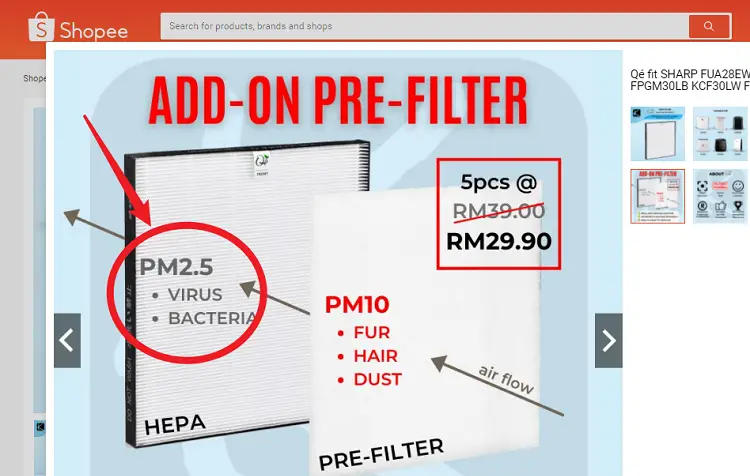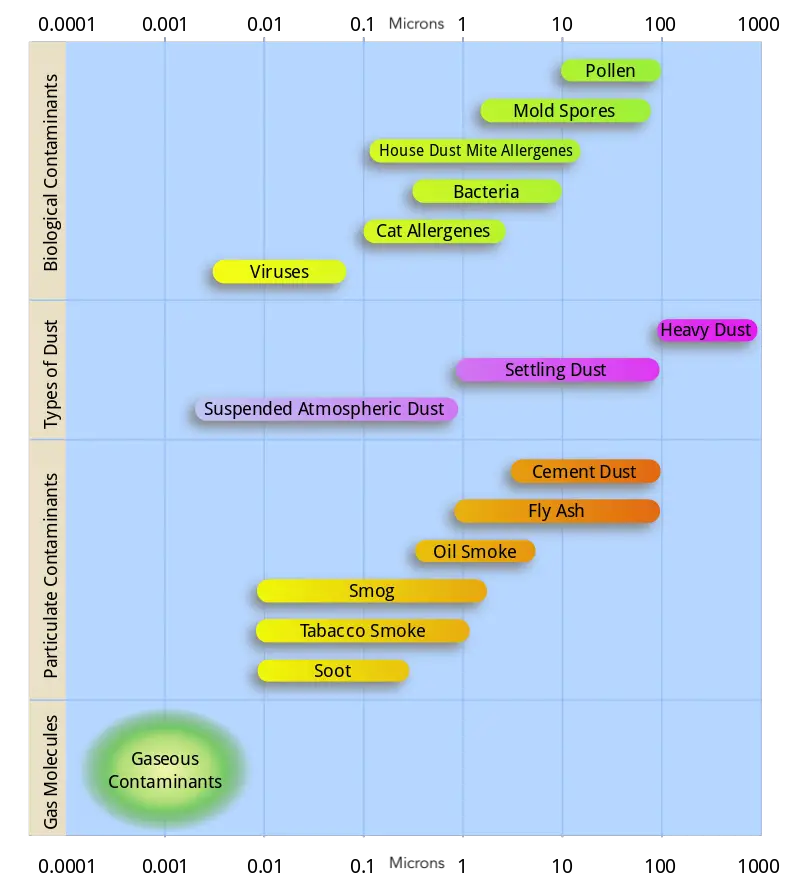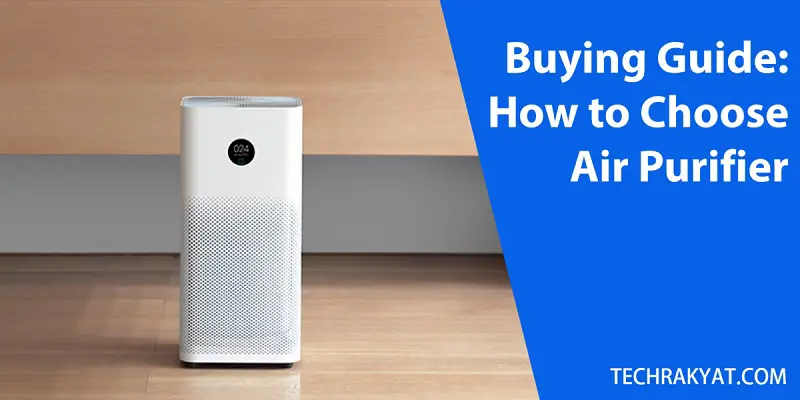The Covid pandemic makes indoor air quality more important than ever. It is necessary to get the right air purifier for your house and office to improve indoor air quality.
Moreover, according to a South Korean’s research done in 2020[1], it is found that air purifier is indeed beneficial for asthma and allergy sufferer. Whether i
Withou further ado, let us get right into my three parts process on how to choose the best air purifier for your home.
- Understanding terminology of air purifier
- Essentials tips for choosing an air purifier
- Air purifier features to avoid
Table of Contents
ToggleUnderstanding terminology of air purifier
CADR and ACH ratings are two of the most common terms you will come across on any established air purifier brand.
What is a CADR rating?
CADR refers to Clean Air Delivery Rate. CADR represents the volume of air in CFM (cubic feet per minute) that has been filtered.
For example, an air purifier with a CADR rating of 200 CFM will clean air more efficiently than one CADR rating of 100 CFM. In short, higher CADR is always better
What is an ACH rating?
ACH is an acronym for Air Changes per Hour. An air purifier’s ACH rating indicates how often the air of a room is exchanged per hour.
Basically, a 5X ACH filter will clean the specific size more times than a 2X ACH filter.
In general, more fresh air exchange leads to better air quality
Filter types for air purifiers
HEPA Filtration: A true HEPA Filter class, H13 is certified to remove 99.97% of all microscopic particles as small as 0.3 microns in size. It can efficiently filter air pollutants and fine particles such as mold spores, dust mite, tobacco smoke, pet hair, pet dander and more.
There are some uncertified “HEPA” filter replacement kit sold on the market. If you pay attention, it says that they only filter particle of 2.5 microns aka PM2.5 filters.

It is not really a bad thing since not everyone can afford the true HEPA filter, which needs to be replaced yearly. For basic usage, it should be sufficient.
If you have allergies or asthma, you should stick to the H13 Hepa filter. Here is a chart by smartairfilters.com

Airborne particles smaller than 2.5 microns, such as smog, smoke, mites allergen cannot be capture by PM2.5 filter. These types of pollutants are particularly harmful to our lungs and respiratory system.
Ionic Filtration: This air cleaning technology operates by emitting a cloud of charged ions into the air that latches onto airborne contaminants. But beware of any ionizer that releases Ozone.
Carbon Filtration: This process involves utilizing an activated carbon filter, which has millions of tiny pores. The large surface area traps gases and odour very well.
Carbon filters are what make a home smell fresh and clean and are always found in an air purifier.
Even though consumer reports say it’s useless as the carbon filters are too small to be useful almost all of the time, we beg to differ.
In fact, an activated carbon filter is proven to be efficient again VOC (volatile organic compounds) in one environmental engineering study[2].
Ultraviolet Light: An ultraviolet spectral band called UV-C is used. The UV light can kill bacteria and viruses, but the exposure must last at least minutes, not seconds, for it to be effective. Therefore, it is really a gimmicky marketing tactic by air purifier companies. There is no need for it.
4 Quick tips for choosing an air purifier
- Determine where you will use your air purifier so you can choose the right size.
- Compare critical features: CADR and ACH.
- Consider the maintenance costs of an air purifier. Choose the type of filter you can afford.
- Consider the extra features you need like WiFi connectivity, programmable timer. air filter exchange indicators, and accurate air quality digital display
Where do you want to use the air purifier?
It is generally better to have a larger air purifier unit because it cleans more effectively. However, it also takes up more space and is more expensive.
Knowing where you want to use the air purifier will help you determine its size. If you use it in the living room, you definitely want to go for bigger air purifier with strong fan blower. For bedroom, you would want air purifier which is more discreet and operates silently.
Comparing the CADR, ACH and CFM rating.
Once you have decided on the size of air purifier you need. You can start shopping for an air purifier.
These are the minimum CADR ratings by room size provided by the Environmental Protection Agency (EPA), United States:
| Area, in sqft | Minimum CADR, in CFM |
| 100 | 60 |
| 200 | 130 |
| 300 | 195 |
| 400 | 260 |
| 500 | 325 |
| 600 | 390 |
You should also pay attention to the air change per hour (ACH) rate of an air purifier especially if you have allergies or asthma.
Air purifiers that can purify the air within a space at least four times an hour are best for allergy and asthma sufferers.
Maintenance cost of air purifier
It is important to replace an air purifier’s filter on schedule to ensure that it is really working and purifying the air.
However, a true H13 Hepa filter costs hundreds of ringgit.
If you cannot afford HEPA air purifier, you may want to look into air purifiers that have cheap replacement filters available.
What extra features do you want with the air purifier?
These are the extra features which I consider nice to have especially if you have the budget:
WiFi Connection: You can control it from your phone. Means you can turn it on even before you arrives at home.
Air quality digital indicator: A meticulous person will love air quality indicators that display the air quality rating in numbers instead of colored indicators.
Remote controls: It is convenient to have the remote control so you can turn it on and off easily.
Filter change indicators: Those who are forgetful will appreciate this feature and replace the filter on time
Programmable timer: The purifier can be turned on before you enter the bedroom and shut down after it has operated for several hours.
Noise level: It is recommended to get air purifiers with a noise rating of 50 decibels because air purifiers often have to run for long periods of time. But noise are unavoidable for large air purifier as we know higher fan speed will induce higher noise level.
Portable air purifier: Some prefer air purifier comes with a castor wheel so that it can move more easily.
Air Purifier Features to Avoid
Air purifier that emits ozone
There is the possibility of producing ozone if a unit has an ionizer (which attracts particles via static electricity). A high indoor ozone concentration is harmful to human health. Make sure to avoid air purifiers that claim to emit “activated oxygen,” “super oxygen,” or “energized oxygen.”
A conventional ionizer air purifier adds a negative charge to the harmful airborne particles making them heavier and falls to the ground.
However, not all ionizer air purifier emits ozone. For example, Sharp air purifier does not emit ozone.
Using Plasmacluster technology, Sharp air purifier emits positive and negative ions. It pulls apart microscopic airborne pollutants and turns them into water vapor. The Plasmacluster technology has been certified by 31 global testing laboratories for its safety and effectiveness.
Air purifier: Bottom line
A good air purifier comes down to two things: machine size and CADR ratings. We should turn on the air purifier continuously throughout the day to ensure constant air purification and circulation within the room.
Reference:

